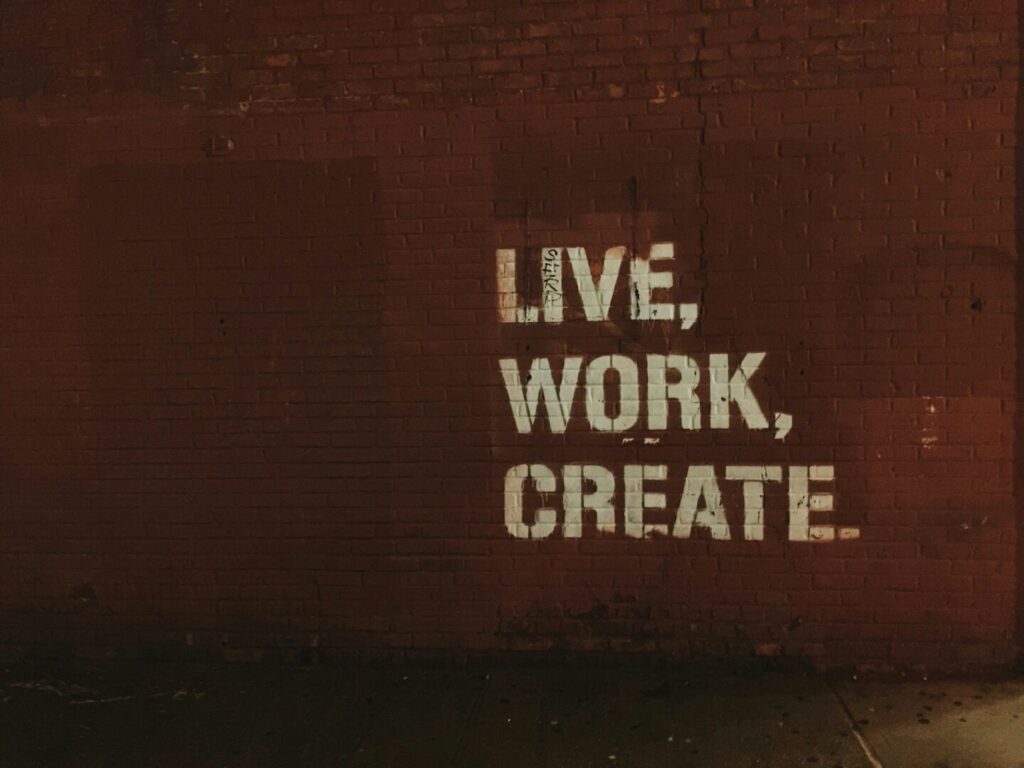Starting a business with no capital is not a fantasy. It’s a practical path millions of people take every year. The most reliable route is to convert your time, skills, attention, and the free tools already available online into an income-producing activity. This guide gives you eleven concrete, research-backed small business ideas that require essentially zero upfront cash, shows how people are actually doing them today, and gives step-by-step, realistic instructions to move from idea to income.
Before we dive into the ideas, a short reality check. Starting with zero money means you trade capital for time and sweat equity. You’ll rely on free platforms, organic marketing, barter, creativity, and pre-selling to get momentum. Many founders emphasise that service-based work and digital products are the fastest ways to convert effort into cash without investment. These are the two constant themes you’ll see again and again in this guide.
Read more: From Employee to Entrepreneur: The Mindset Shift That Changes Everything
1. Freelance Services With a Niche Focus
Freelancing is the classic zero-money business because your main asset is your skill. The difference between a hobby freelancer and a small-business freelancer is niching and packaging. Instead of “I do marketing,” you position yourself as “I help wellness coaches convert Instagram followers into paying clients with a simple three-message funnel.” Niche clarity makes sales easier and pricing stronger.

Start by listing the services you can deliver today without costs. Writing, proofreading, basic web design using free builders, social-media content creation, translation, bookkeeping (using free spreadsheets), virtual assistance, and research. Find one niche where you can make a specific promise and package it into a single sellable offer. One-week website refresh, five high-converting emails, a month of done-for-you reels. Then approach potential clients where they already hang out. Niche Facebook groups, LinkedIn messages, local community boards, and direct messages on Instagram. Many entrepreneurs report landing their first clients by cold messaging 20 prospects. They used a concise value-driven pitch and one sample deliverable.
How to scale this zero-cost model: systemise and productise. Once you have repeatable results, create an evergreen product out of your service. Templates, swipe files, or a short paid workshop. Those products can be sold on Gumroad, Etsy (for templates), or a landing page linked from your social profiles. All of which can be started for free.
Read more: The Ultimate Checklist for New Small Business Owners in 2026
2. Micro-Consulting and Coaching (Paid Short Sessions)
People pay for short, high-value conversations when those sessions solve a single pressing problem. Micro-consulting is offering 30- to 90-minute problem-solving sessions at a premium for specific outcomes. Consultants in this space do not need certifications or a fancy office; they need clarity, frameworks, and testimonials.
Pick a specific outcome. For example: “I’ll audit your landing page and give three fixes that increase conversions”. Or “I’ll create a 30-day organic content plan for your brand”). Set up a free Calendly, use Zoom/Google Meet, and promote via organic posts or a targeted message to connections who fit your ideal client profile. Reddit threads show many people starting this way and quickly getting paid. Because clients prefer fast, actionable advice over long retainers when they have an immediate problem.
This approach also allows flexible pricing experiments. Test a lower price to get initial proof, then increase as your results accumulate. After several sessions, package the most asked questions into a low-cost digital product or a recorded workshop for passive income.
3. Digital Products: Templates, Guides, and Micro-Courses
Digital products are a rare business that can scale with almost zero marginal cost. Creating a PDF guide, a set of templates, or a micro-course requires time but not inventory. Success depends on clarity about the buyer and a tight value proposition.
Start by identifying repetitive problems your audience faces. Maybe new business owners need invoice templates, social-media caption templates, onboarding sequences, or an email welcome series. Create one polished deliverable using free tools (Google Docs, Canva free tier, or Slides) and sell it on platforms that take no upfront fees, like Gumroad or PayPal buttons linked to a basic landing page. Shopify and other small-business guides repeatedly highlight digital products as low-investment, high-margin opportunities that are especially effective when paired with a free lead magnet to capture emails.
Promotion is where effort matters. Offer the product to your existing network, trade early copies for testimonials. And post helpful snippets on platforms like LinkedIn, TikTok, and Instagram to generate organic demand. Once you make a few initial sales, reinvest in a small ad experiment or collaborate with a micro-influencer to accelerate growth.
4. Content Creation and Micro-Education (Short-Form Video + Newsletters)

Content creators who teach in micro-form are monetising knowledge without any upfront cash. Short educational videos, step-by-step reels, and concise newsletters build trust, authority, and a direct audience. Creators often monetise through affiliate recommendations, sponsorships, paid newsletters, or selling consulting time that grows from the audience.
The current landscape favours consistent, useful content. Choose a single teaching lane: for example, “one practical sales tactic a week for handmade brands” or “marketing experiments for service providers.” Publish daily short videos and weekly newsletter posts. Use free platforms for distribution: TikTok, Instagram Reels, LinkedIn, and a free Substack or MailChimp plan for email capture. Industry coverage and creator guides show that consistent micro-education leads to multiple revenue streams, especially when paired with clear calls to action and a paid offer for those who want deeper help.
The primary cost here is time. The advantage is that once you build an audience, every conversion becomes easier. Repurpose content across formats to stretch each idea further.
Read more: Is it Too Late to Join UGC as We Approach 2026?
5. Affiliate Marketing Through Genuine Recommendations
Affiliate marketing has a reputation for noise, but the profitable approach is to recommend products you truly believe in and pair those recommendations with high-quality content that answers specific buyer questions. Affiliates can be built with no money by creating comparison posts, honest reviews, and tutorial videos, then linking to products via affiliate links.
The trick is to be highly targeted and genuine: narrow your niche, write detailed problem-solution content, and include clear demonstrations.
Use free platforms and communities where your target audience already is. Many creators recommend starting with one platform and one product category, then iterating to expand your reach. Credible affiliate income takes time, but it scales because every piece of helpful content continues to convert.
Note on ethics: always disclose affiliate relationships. Transparency increases trust and long-term conversion.
6. Reselling and Flipping With Zero Start-Up Inventory
Reselling is old-school entrepreneurship: find free or underpriced items and resell them at market value. With zero money, you can start by leveraging free sources: local free listings, curb-side finds, thrift-store pickups that can be negotiated, or even offering to clear items from people’s homes in exchange for the items.

Many entrepreneurs recommend starting with items that are easy to photograph and ship and that have consistent demand, like books, vintage clothing, or home décor. Use platforms like eBay, Facebook Marketplace, Etsy (for vintage), or Depop. You can also pre-sell items by listing “pre-orders” for items you will source; the customer pays upfront, and you use that money to buy the inventory. This model requires hustle, negotiation skills, and a good eye for value. Reddit threads provide real-life accounts of people gradually scaling and flipping into a regular income channel.
Start small: list one or two items, learn how to write compelling descriptions and take clean photos with your phone, and calculate fees and shipping before you commit.
7. Community Subscriptions and Paid Micro-Groups
Community monetisation is a modern, low-cost business model. If you can gather people with a shared problem and provide consistent value, you can charge a small monthly fee for membership. Communities succeed when the host curates useful resources, runs occasional live sessions, and encourages peer support.
Choose a tight niche and a specific promise: for example, “monthly feedback on your landing page” or “weekly office hours for solopreneurs to get marketing help.” Host the community on free or low-cost platforms like a private Telegram group, Discord, or Circle.so trial tier; promote through your network and social content. Many small businesses started this way by offering early-founder pricing in exchange for testimonials and case studies. The ongoing work is moderation and regular content, but the recurring revenue can stabilise cash flow quickly. Reddit discussions often highlight community-led monetisation as a reliable way to turn expertise into predictable income.
8. Virtual Assistant Services for Specialised Niches

Virtual assistance (VA) has evolved beyond general admin. Niche VAs – for example, an ecommerce VA who handles order processing and customer messages, a content VA who schedules posts and repurposes content, or a podcast VA who handles guest outreach and editing coordination – command higher rates and can be started with zero cash.
Start by listing services you can already perform. Set up a simple service page using a free website builder or a Linktree-style landing page that lists offerings and a Calendly link for consultations. Approach small business owners, coaches, and online creators with a tailored pitch that explains how you’ll save them time or increase revenue. Many founders recommend offering a short trial period or a paid pilot to lower the friction for the first client. Once you have processes and templates, you can scale by subcontracting to other VAs and taking a management fee.
9. Local Errand and On-Demand Services
Local services often have the lowest barrier to entry because they require no specialised equipment or certifications: grocery shopping for busy professionals, dog-walking, furniture-assembly help, elder assistance, and minor home repairs (if you’re handy) all start with simple word-of-mouth and local online listings.
Begin by listing your service and price, then post on local community groups, Nextdoor, Facebook Marketplace, and physical bulletin boards in your neighbourhood. Many people on entrepreneur boards recommend offering discounted rates for the first few clients in exchange for reviews and referrals. Local services are attractive because you can get paid on the same day of the service. The primary investment is trust: build it with quick, clear communication and a short agreement that outlines expectations.
10. User Testing and Micro-Tasking Platforms
There’s a group of businesses you can bootstrap by selling small blocks of your time on platforms that pay for user testing, micro-tasks, or gig work. User-testing platforms pay for recorded sessions where you test apps and websites; micro-task platforms pay for small online tasks; gig platforms connect you with one-off local gigs.
This model is less scalable than others, but it’s ideal for immediate cash flow and can act as seed money to fund your next move. Many entrepreneurs use micro-task income to cover monthly expenses while building a more scalable product or service. The downside is that platform fees and competition can reduce per-hour effective earnings, so treat these gigs as stepping stones rather than permanent business models.
11. Pre-Selling Physical Products or Services (Validate Before You Buy)
Pre-selling is the classic solution when you have an idea for a product but no money to produce inventory. You validate demand by selling before you manufacture. Pre-selling works for physical products, limited-run creative goods, and services that require an upfront deposit.
Craft a clear offer, set a reasonable delivery timeline, and use your social channels, email list, or a small landing page to collect orders and payments via PayPal, Stripe, or a similar provider. Many founders on Reddit swear by this method to launch products without personal capital – you get paid first, fulfil later, and reduce financial risk. If scaled carefully, pre-selling can turn into a repeatable model for limited releases and special collaborations.
Practical Launch Playbook (Zero-Money Checklist That Actually Works)
This section condenses the exact steps you should follow to turn one of the above ideas into an active micro-business today, using zero cash.
First, choose one idea from the list and focus. The most common failure is idea-hopping. Commit to one experiment for four weeks. Second, define a single, clear offer that promises an immediate, measurable outcome for a specific customer. Write the offer as a headline plus one sentence proof of result. Third, build a one-page presence: a simple landing page (Google Sites, Carrd free tier, or a single social profile that acts as your funnel). Fourth, create a direct outreach list of 20–50 potential customers who fit your target profile. Personalise outreach messages and keep them short – mention a specific problem, your offer, and a low-risk call to action. Fifth, deliver your first paid customer work with over-delivery so you get a testimonial. Sixth, ask for referrals and case studies, and use those to fuel iterative outreach and organic content.
This framework is the distilled advice repeated across Shopify business guides, entrepreneur articles, and countless Reddit threads where people document how they converted zero capital into their first sale. It’s simple, but it works because it prioritises actual customers over polished marketing collateral.

Marketing Without Money: Strategies That Convert
Organic content that educates or solves immediate problems is your best marketing tool. Short-form video and LinkedIn posts that demonstrate a result or show a transformation will get more traction than abstract motivational posts. Use direct message outreach with a value-first approach: give a free micro-audit, a constructive suggestion, or a quick tip before asking for the sale. Collaboration works: exchange value with other micro-entrepreneurs by trading services or co-hosting a live session to pool audiences.
Leverage free distribution: participate in niche communities (Reddit, Facebook Groups, industry forums) not to spam, but to answer questions and demonstrate expertise. Many entrepreneurs started with nothing by answering the same five questions repeatedly in their niche and then packaging the answers into a product. Use email: even a small list of 100 highly targeted contacts who get personal messages will outperform broad, unfocused social-media exposure.
Finally, track what works. You don’t need expensive analytics – just basic counts: how many messages did you send, how many replies, how many conversions, and what was the revenue per client. Iterate fast and double down on the channels that deliver bookings.
Real-Life Examples and Lessons From Communities
The most valuable validation for a “zero money” business model is real people doing it now. Across Reddit threads and entrepreneur articles, three patterns repeat: service-based offers convert fastest, digital products scale best after validation, and community-backed businesses create steady recurring revenue. Founders often begin by trading services for testimonials, using those testimonials to create paid offers, and then diversifying into digital products or small cohorts.
One frequent narrative involves starting with one low-cost client through cold outreach, over-delivering to secure a testimonial, and then using that social proof to attract five more clients through direct messaging and referrals. Another common path is to launch a micro-course or template bundle and use short-form content to attract initial buyers. These real-world accounts reinforce our earlier advice: start small, prove demand, and reinvest time and early revenue into higher-leverage activities.
Common Obstacles and How to Beat Them
You will face competition, scepticism, and the temptation to over-polish. Competition is healthy – it proves demand. Your job is not to be the cheapest, but to be the clearest and the most focused. Scepticism is solved with early testimonials and clear deliverables. Over-polishing delays revenue; launch with a minimum viable offer and refine after the first sales.
The psychological hurdles are real. Starting with no money often triggers self-doubt. Counter this by defining small, measurable goals for each week and by celebrating the small wins: first client, first positive feedback, first recurrent booking. Momentum compounds.
Practical obstacles like payment setup, taxes, and legal structure can be handled incrementally. Use simple payment methods (PayPal, Stripe, bank transfer) and consider invoicing tools with free tiers. When revenue grows, set aside a percentage for taxes and consult local resources for small-business registration options that fit your market.

Pricing Strategies When You Have Zero Credibility
Pricing is part psychology. Start with a higher-than-you-think rate for focused outcomes and a lower introductory price for your first few clients in exchange for testimonials. Present pricing as a range rather than a negotiable number. Package your service into fixed-scope offers with clear deliverables and timelines. Value-based pricing often outperforms hourly rates because clients purchase outcomes, not time.
If you’re unsure, offer a paid pilot: a one-off small project that delivers a specific result. Pilots reduce the perceived risk for clients and provide you with the case studies you need to raise prices later.
Low-Cost Tools That Enable Zero-Money Businesses
You don’t need paid software to begin. Use Google Suite for documents and spreadsheets, Canva Free for visuals, Carrd or Google Sites for a landing page, Calendly free plan for scheduling, and Stripe or PayPal for payments. Social platforms and email capture with a free Substack or MailChimp plan are enough to start building an audience. When revenue arrives, prioritise reinvesting in tools that multiply your output: ads for proven funnels, a better website, or an automation that saves hours per week.
Shopify’s guide to starting without money and other popular small-business resources all point to the same conclusion: free tools plus sweat equity are sufficient to launch, but reinvesting early revenue in growth tools accelerates scaling.
How to Pick the Right Idea for You
Choose the idea that aligns with your current skills, your capacity for time investment, and your personality. If you love talking to people and solving immediate problems, start consulting or virtual assistance. If you prefer creation and scaling, start with digital products or content creation. If you want immediate cash for time-limited effort, local services, or flipping can provide quick returns. The best idea is the one you’ll finish building and market consistently.
Here’s a mental litmus test: explain your offer in one sentence. If you can’t convey the outcome quickly and clearly, you’ll struggle to sell it.
Next Steps: A Two-Week Sprint to Your First Sale
Week One: pick one idea, define your offer in one sentence, and create a one-page presence. List 30 potential clients and send personalised outreach to 20 of them. Publish three short pieces of content that demonstrate your skill.
Week Two: follow up with prospects, deliver at least one paid client project, collect a testimonial, and use that social proof to publish a case study or a short video. Iterate offers, raise prices slightly, and systematise the parts of the process that repeat.
This sprint structure mirrors what successful founders share in community threads: consistent, small actions compound quickly – even without money.

Long-Term Thinking When You Started With Nothing
Starting with zero money means building optionality. Every client relationship, every product, and every piece of content is an asset. Reinvest early profits into the highest-leverage pieces: better systems, advertising that scales, or hiring a subcontractor to free your time. Aim to convert one-time buyers into recurring customers through memberships, retainers, or subscription products.
Remember: the path from zero to sustainable revenue is a series of validated steps – test, learn, and iterate. The ideas in this article are not get-rich-quick schemes; they are proven, practical ways to create value for real customers and to be paid for it.
Who We Are And How We Can Help
Josei is a boutique digital-marketing studio that helps small businesses and founders turn ideas into paying customers. We specialise in early-stage launches, productising services, and designing content strategies that convert attention into revenue. If you’d like help turning any of the ideas above into a step-by-step launch plan – including a one-page funnel, a 30-day content calendar, and a pitch template for outreach – we can build that with you.
Reach out, and we’ll create a tailored, no-fluff plan to help you quickly and sustainably acquire your first paying customers.



